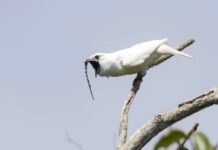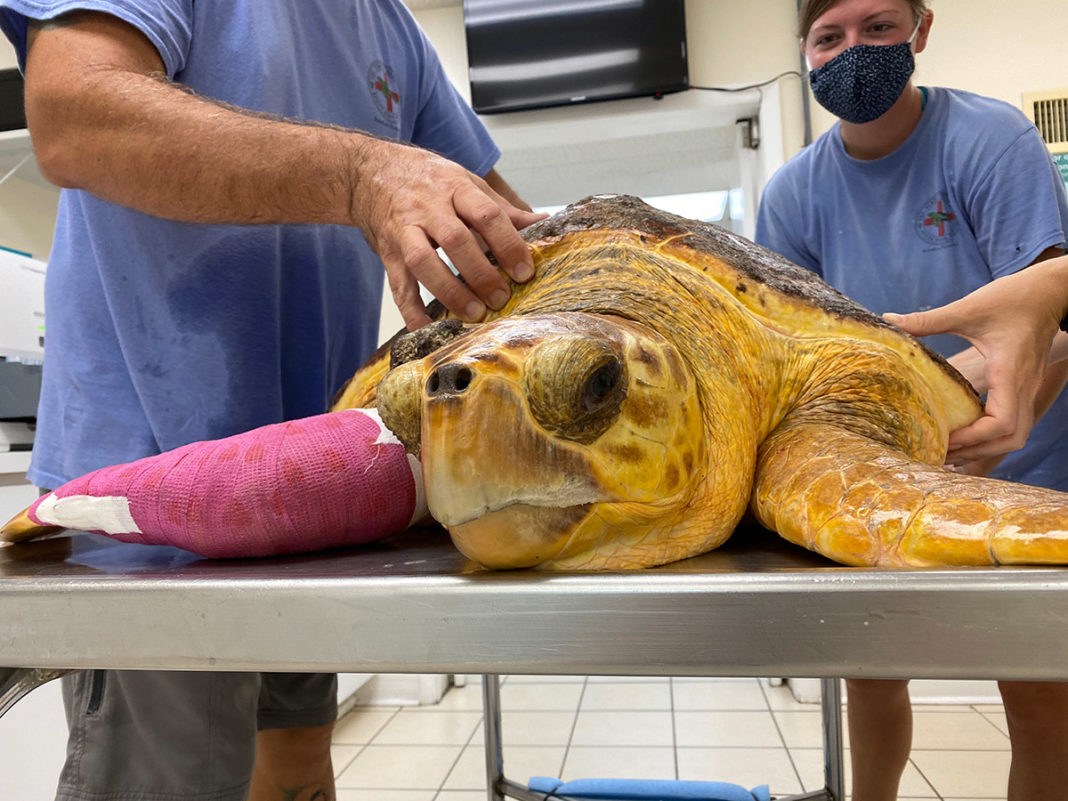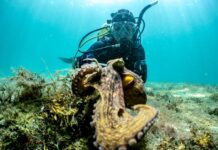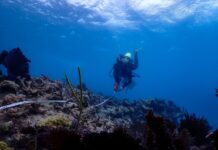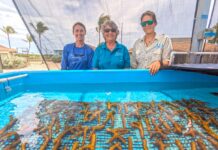The Keys Weekly Newspaper reached out to Bette Zirkelbach at The Turtle Hospital in Marathon to check in on “Chomper.” The loggerhead sea turtle was rescued off the Middle Keys recently. She was tangled in fishing line but, more notably, the turtle also had the biggest tumor the rescue group had ever encountered.
Here’s more:
Who helped with the rescue? A young family vacationing in Marathon saw the loggerhead sea turtle in distress, entangled in fishing line and rescued the turtle. Their two young boys named the turtle “Chomper” because she was so bitey. The family had visited the Turtle Hospital last year and knew who to call for help.
Did the monofilament fishing line cause or exacerbate the tumors? The line was entangled in the tumors. It is possible the irritation/stress from the fishing line exacerbated the tumors.
What causes tumors like these in loggerheads? We do not yet have confirmed histopathology on the tumors, but most likely fibropapillomatosis. Fibropapillomatosis (FP) is commonly found in juvenile green sea turtles in and around developed islands around the world. It is much less common in other sea turtle species, but has been found in all.
What is the effect of a tumor that big on a turtle’s chances of survival? The massive tumor on Chomper’s flipper impeded her swimming and was debilitating, taking blood supply away from Chomper’s organs. Chomper’s blood volume was dangerously low when admitted to the Turtle Hospital. Chomper received a blood transfusion post-surgery to improve her chances of survival. Madea, a non-releasable loggerhead sea turtle living at the Turtle Hospital, was the blood donor.




Could such a large tumor have caused her to get entangled? Yes, the pedunculated tumors on Chomper were entangled in fishing line.
Are tumors of this type common in turtles in the Keys? Yes, more than 50% of the juvenile green sea turtle population in and around the Florida Keys have fibropapillomatosis. It is much less common in loggerhead sea turtles, but FP is found in all species of sea turtles around the world.
How did the surgery go? The surgery was long and tedious. It was a challenge for Dr. Terry Norton to save Chomper’s flipper, as it was difficult to differentiate between tumor and flipper. FP tumors are invasive and can grow into the bone. We are cautiously optimistic Chomper’s flipper will recover. Chomper’s blood volume is being monitored daily and she has a compression wrap on her flipper at the surgery site to manage bleeding.
What’s next for Chomper? Post-surgery treatment includes compression bandages, wound care, additional surgery to remove a much smaller tumor from Chomper’s neck, IV fluids, broad spectrum antibiotics, vitamins, pain medication, class 4 laser therapy and lots of TLC.
Will Chomper rehabilitate at the Turtle Hospital? Yes. Chomper has a long way to go in recovery. Rehabilitation may take up to 6 months.
How big of an issue is entanglement for sea turtles, generally, and in the Keys? We have been seeing a higher number than usual of severe entanglement injuries. We have had three amputation surgeries in the past few months due to fishing gear entanglement.
How big was the tumor? 14.2 pounds! More than 10% of her body weight! The tumor was bigger than a basketball!
What’s the takeaway on Chomper’s story? It’s a compelling reminder to bring all your fishing gear back to shore and, if you are out on the water and see abandoned fishing gear you are able to safely get in the boat, please take the time to do so and bring it to shore and properly dispose of it. You will be helping to keep our marine animals safe!
What should we do if we see a turtle in distress? If you are enjoying the Keys waters and see a sea turtle in distress, please call our 24-hour hotline at 305-481-7669 or radio the U.S. Coast Guard on VHF Channel 16.













